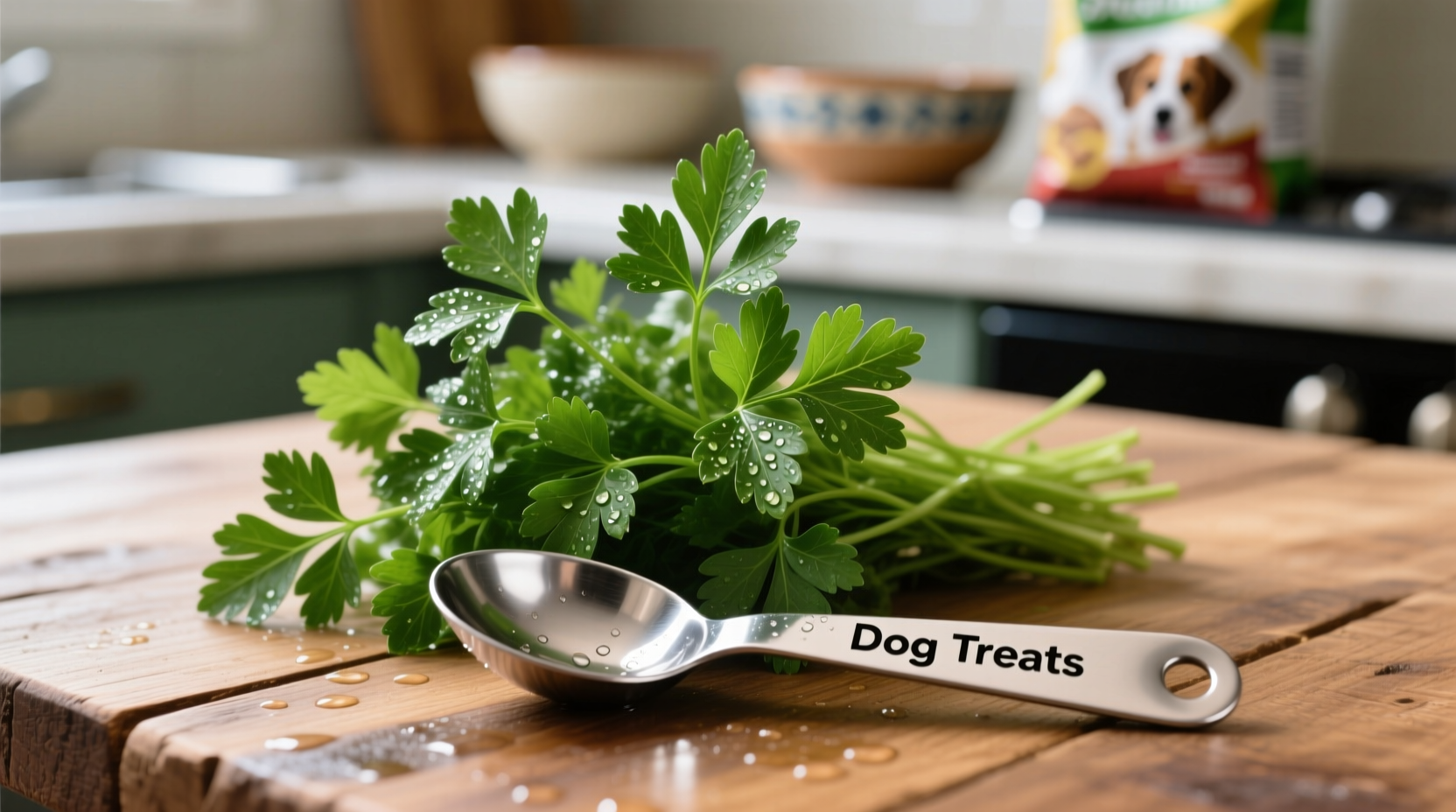Understanding Parsley's Role in Canine Nutrition
When pet owners search "is parsley safe for dogs," they deserve clear, evidence-based answers. As a culinary expert with deep knowledge of herb properties, I've researched veterinary literature to provide accurate guidance on incorporating parsley into your dog's diet safely.
Is Parsley Safe for Dogs? The Essential Facts
According to the ASPCA Animal Poison Control Center, parsley (Petroselinum crispum) is non-toxic to dogs when given in appropriate quantities. This makes it one of the safest herbs you can share with your canine companion. Unlike many human foods that pose serious risks to dogs, parsley falls into the category of "generally recognized as safe" (GRAS) by veterinary nutritionists.
However, safety depends on proper dosage and your dog's individual health status. The key question isn't "can dogs eat parsley" but rather "how much parsley can dogs eat safely." Understanding this distinction prevents potential digestive upset while maximizing health benefits.

Parsley Benefits for Dogs: What the Research Shows
When properly administered, parsley offers several evidence-backed benefits for dogs:
- Natural breath freshener: The chlorophyll content helps neutralize odors from within, addressing "parsley for dog bad breath" concerns more effectively than temporary mouthwashes
- Vitamin powerhouse: Rich in vitamins A, C, and K, supporting immune function and blood health
- Urinary tract support: Contains apiol, which may help maintain healthy urinary function in dogs
- Digestive aid: Natural enzymes can assist with digestion when given in appropriate amounts
Safe Parsley Dosage Guidelines for Dogs
One of the most frequently searched queries is "how much parsley can dogs eat," and the answer depends on your dog's size. The following table provides evidence-based recommendations from veterinary nutrition studies:
| Dog Size | Maximum Daily Parsley | Frequency |
|---|---|---|
| Small breeds (under 20 lbs) | 1/4 teaspoon chopped | 2-3 times weekly |
| Medium breeds (20-50 lbs) | 1/2 teaspoon chopped | 2-3 times weekly |
| Large breeds (50+ lbs) | 1 teaspoon chopped | 2-3 times weekly |
These amounts represent "fresh parsley for dogs" measurements. If using dried parsley, reduce the quantity by 75% as the concentration of compounds increases during drying. Never exceed these amounts, as excessive consumption can lead to digestive upset or more serious issues.
When Parsley Isn't Appropriate for Dogs
While parsley offers benefits, certain health conditions create important "context boundaries" where it should be avoided:
- Pregnant dogs: Parsley contains compounds that may stimulate uterine contractions
- Dogs with kidney disease: The high vitamin K content may interfere with certain medications
- Dogs on blood thinners: Vitamin K can counteract medication effects
- Puppies under 12 weeks: Their digestive systems are too immature for supplemental herbs
If your dog has any pre-existing health conditions or is taking medication, consult your veterinarian before introducing parsley. This precaution addresses the common search query "can dogs eat parsley with kidney disease" and similar health-specific concerns.
How to Safely Prepare Parsley for Your Dog
For those searching "how to give dogs parsley," proper preparation maximizes benefits while minimizing risks:
- Wash thoroughly: Remove pesticides and contaminants that could cause digestive issues
- Chop finely: Prevents choking and improves digestion of the fibrous herb
- Start small: Introduce with just a pinch to monitor for any adverse reactions
- Mix with food: Blend into regular meals rather than offering as a standalone treat
- Avoid seasoning: Never prepare parsley with garlic, onions, or other toxic ingredients
For "parsley water for dogs," steep 1 teaspoon of fresh parsley in 1 cup of hot water for 10 minutes, then cool completely before offering a few tablespoons. This provides a gentler introduction for dogs new to parsley.
Alternative Herbs When Parsley Isn't Suitable
If your dog doesn't tolerate parsley or has contraindications, consider these safe alternatives that address similar concerns like "parsley for dog bad breath":
- Mint: Excellent breath freshener, but use sparingly as large amounts can cause heartburn
- Basil: Contains antioxidants and has mild anti-inflammatory properties
- Cilantro: Rich in vitamins and generally well-tolerated by most dogs
Always introduce one herb at a time and monitor your dog's reaction before combining different herbs in their diet.
Recognizing Parsley Overconsumption in Dogs
While rare, excessive parsley intake can cause problems. Watch for these signs if you're concerned about "how much parsley is too much for dogs":
- Increased urination (due to parsley's diuretic properties)
- Mild digestive upset including gas or loose stools
- Photosensitivity in dogs with light-colored coats (rare)
- Vomiting in cases of significant overconsumption
Most symptoms resolve within 24 hours after discontinuing parsley. If symptoms persist or worsen, contact your veterinarian immediately.
Professional Recommendations for Parsley Use
Veterinary nutritionists emphasize that parsley should complement—not replace—your dog's balanced diet. The American College of Veterinary Nutrition recommends viewing parsley as a supplemental treat rather than a dietary staple. When properly dosed, it can be a valuable addition to your canine care routine, particularly for addressing "parsley for dog bad breath" naturally.
Remember that individual dogs may react differently to herbs. What works well for one dog might not suit another, which is why starting with small amounts and monitoring your pet's response is crucial for safe implementation.











 浙公网安备
33010002000092号
浙公网安备
33010002000092号 浙B2-20120091-4
浙B2-20120091-4